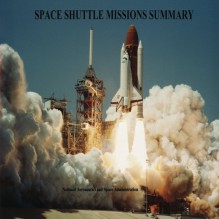The Space Shuttle Vehicle (SSV) was the world’s first reusable Spacecraft. It consisted of a reusable Orbiter Vehicle with three Space Shuttle Main Engines (SSMEs), two Solid Rocket Boosters (SRBs), and an expendable External Tank (ET). The Space Shuttle System consisted of the SSV elements,...
show more
The Space Shuttle Vehicle (SSV) was the world’s first reusable Spacecraft. It consisted of a reusable Orbiter Vehicle with three Space Shuttle Main Engines (SSMEs), two Solid Rocket Boosters (SRBs), and an expendable External Tank (ET). The Space Shuttle System consisted of the SSV elements, Shuttle Carrier aircraft, payload accommodations, and ground support systems. The SSV was designed to perform a variety of missions to low Earth orbit with heavy payload lift capability. SSV missions included: Manned payload bay laboratory science, deployment and servicing of payloads, and special support to space activities such as sortie missions (rescue, repair, maintenance servicing, assembly, and docking), and International Space Station (ISS) assembly, manning, and support including robotic and manned extra vehicular activities. The SSV was flown for 30 years from 1981 to 2011. Brief mission summaries for each of these missions are provided in this document. The document contains “as flown” mission data and pertinent photographs for each flight. It was originally published as an informal document and routinely updated throughout the Shuttle era. This document was originally produced as an informal Mission Operations book and has been updated since Space Shuttle Flight STS-1 and throughout the program. It is a handy reference guide for flight data for all Space Shuttle missions. “As-flown” data is provided as compiled from many flight support sources for ascent, on-orbit events, and descent mission phases. In addition, the specific shuttle vehicle configuration, payload, flight crew, and flight directors are identified for each flight. In the development of this book, the data for the early flights are contained on a single page per flight. For later flights, more pages per flight have been added, primarily for growth in mission complexity as noted in the “Mission Highlights” data column. This particularly applies to missions involved in the assembly of the International Space Station.
show less

